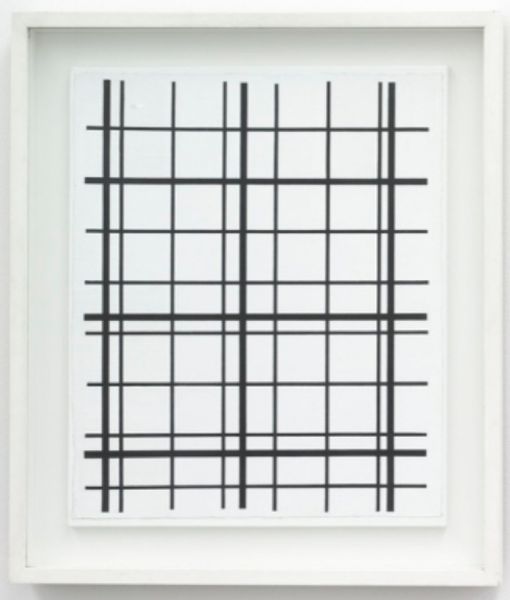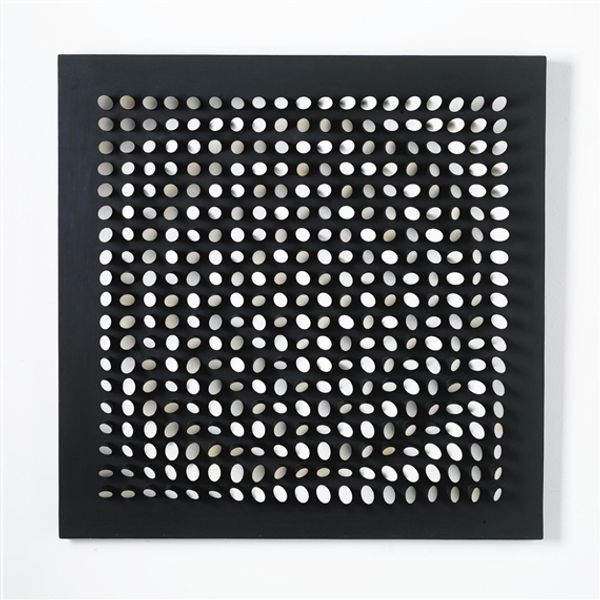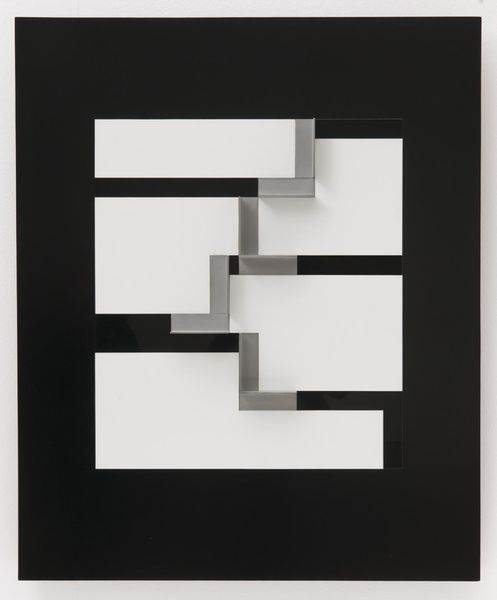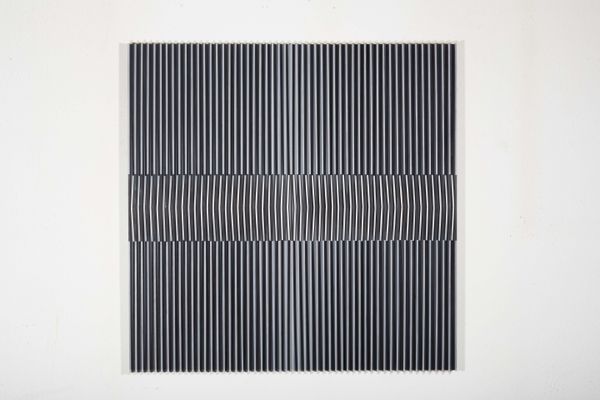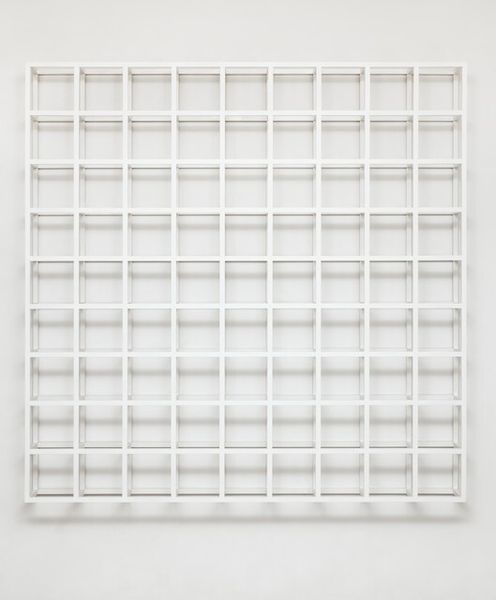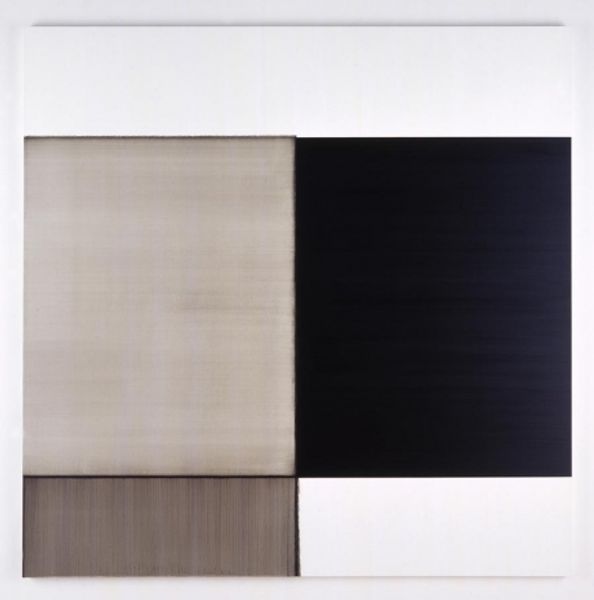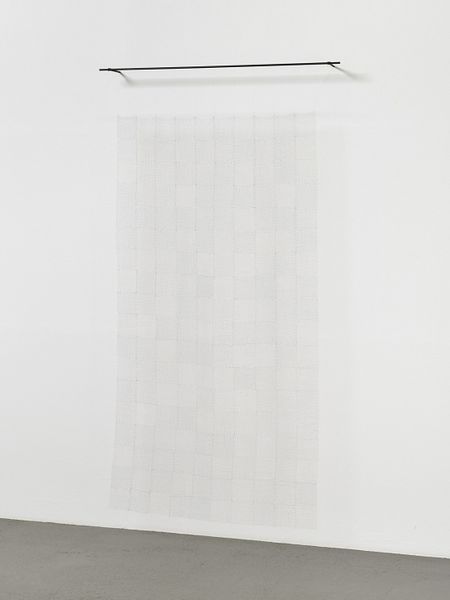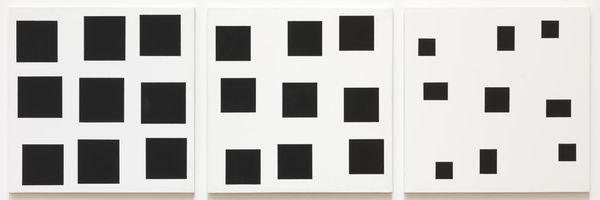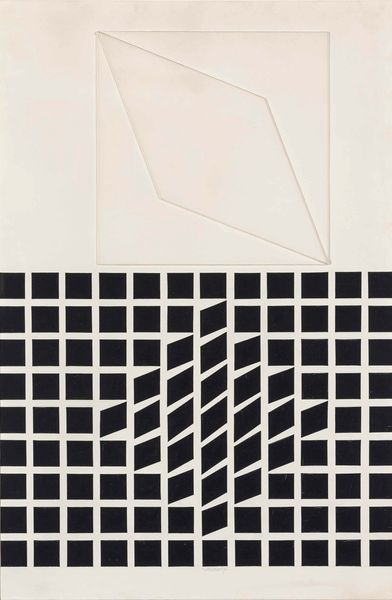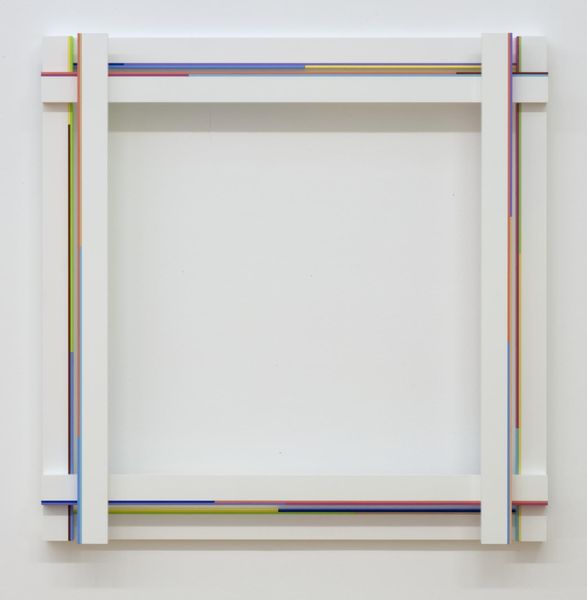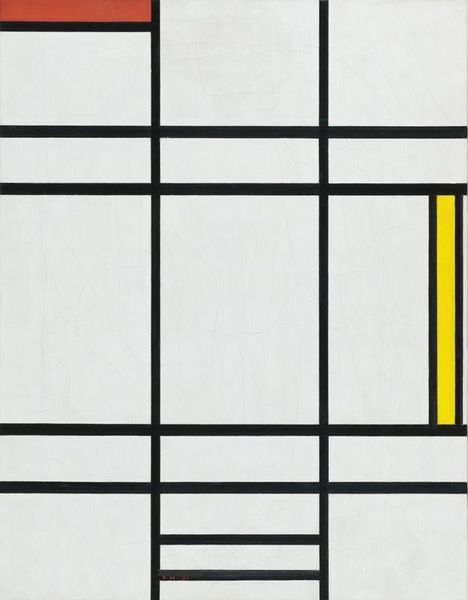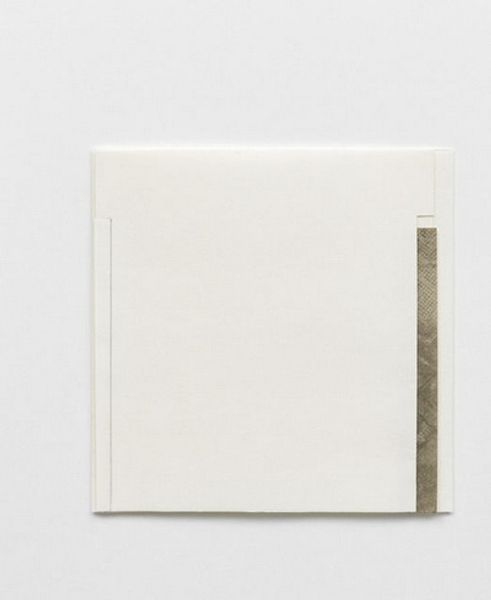
mixed-media, ceramic
#
mixed-media
#
conceptual-art
#
minimalism
#
ceramic
#
minimal pattern
#
geometric
#
abstraction
#
hard-edge-painting
Copyright: Jean-Pierre Raynaud,Fair Use
Editor: Jean-Pierre Raynaud’s “Carrelage + Crochet,” created in 1990, is a mixed-media work using ceramic tiles. It's so stark. Almost sterile, yet strangely compelling. What draws your eye to this piece? Curator: Its deliberate use of industrially produced tiles demands that we consider its materiality first. The rigid grid, a pattern we typically find in utilitarian spaces, highlights Raynaud's engagement with the readymade. Consider how the introduction of "Crochet", translated as "hook", disrupting the surface challenges conventional artistic expression by calling attention to function and manufactured elements. Editor: I see what you mean. It's not just a grid, but a suggestion of a system. Does the title also prompt that reading? The 'hook' suggests a practical purpose somehow. Curator: Precisely. Raynaud asks us to consider labor and mass production through this juxtaposition. What does it mean to take the familiar, a common tile, and elevate it to art? Is it elevated, or does it critique the very idea of the art object? Consider the relationship between Minimalism and the commodity. Editor: So it's a commentary on industrial production and maybe even consumerism, but doing so with the materials themselves. It’s like the medium *is* the message here. Curator: Indeed. The seriality and modularity inherent in the grid system are heightened by the industrial fabrication of the ceramic squares. The ready-made object is the genesis. Raynaud directs the artwork away from personal touch, towards material explorations reflecting the socio-economic structure within which it exists. What implications arise from such an approach? Editor: I hadn't really considered the industrial process itself as being part of the meaning. I always focus on imagery. Thanks for the shift in perspective; I'll definitely approach art with the material production more in mind moving forward. Curator: It’s a useful lens. Examining the artwork’s physical creation unveils layers of social and economic context, providing profound insights into the artistic practice.
Comments
No comments
Be the first to comment and join the conversation on the ultimate creative platform.
